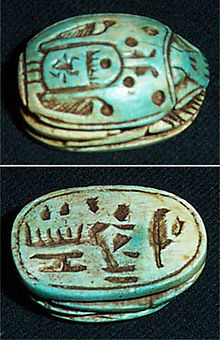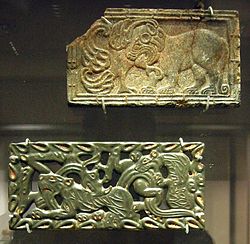Soapstone


Soapstone or steatite is a metamorphic rock. It has a large amount of the mineral talc.
Steatite is softer than most stones. Because steatite feels like soap, people call it "soapstone". People have been making things out of soapstone for thousands of years.
Soapstone is very good at holding heat. For this reason it is used as a cover for wood stoves. The soapstone soaks up the heat of the fire while it is burning, and stays warm for a long time after the fire goes out. It has also been used to make cooking pots, especially in Norway during the Viking Age.
Soapstone has been a major component of ceramics used as electrical component insulators for many years. It is easily formed or carved into shapes.
During the Harappan/Indus civilization (2500 BC–1750 BC) soapstone was used in the manufacture of seals. These people used to import steatite from Shaher-i-sokhta and the Kirthar hills.

